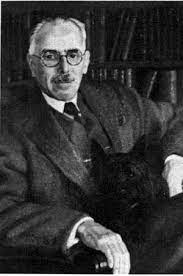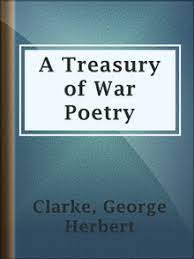With thanks to Dr Connie Ruzich for reminding me that I had not yet researched William
William Kersley Holmes was born in Kings Norton, Worcestershire UK in 1882 – the birth being registered in the third quarter of the year – i.e. July/August/September. His parents were William Charles Holmes, and his wife, Amy Eleanor Holmes, nee Kersley. William had the following siblings: Geoffrey M.K. Holmes, b. 1878, Robert K. Holmes, b. 1880, and Olive K. Holmes, b. 1881.
The family moved to Scotland when William was little and went to live in Dollar, Clackmannshire. Educated at Dollar Academy, William worked in a bank until the First World War began, when he joined the Lothian and Borders Horse Regiment as a Lance-Corporal. He saw action in France and Belgium, before being transferred to the Royal Field Artillery and promoted to the rank of Second Lieutenant.
He joined General Dunsterville's Dunsteforce Expedition to Russia in 1917. Throughout the war, William kept a diary in which he sketched all aspects of army life. Descriptions of life in the trenches also appeared in his poetry. Williams’s WW1 collections were:
“Ballads of Field and Billet” (Gardner, Paisley, 1915) – which was published in four editions - “More Ballads of Field and Billet, and other verses” (Gardner, Paisley, 1915), “In the open: verses! (Gowans & Gray, 1925), and “The life I love: verses” (Blackie, 1958). He also had poems published in four WW1 Poetry Anthologies.
After the war his writing led him into journalism and then publishing – he worked as editor for children’s books with Blackie & Son, creating much of the content of the Blackie’s boys’ and girls’ annuals and contributing many children’s stories to BBC radio. Hundreds of pieces of light verse signed ‘W. K. H.’ were published in Scottish magazines and newspapers, and in national publications such as “Punch”, and “Country Life”. William’s hobby was hill-walking, which inspired “Tramping Scottish Hills”, published in 1947 and “On Scottish Hills”, published in 1962, both illustrated with photographs he took.
William died on 7th August 1966 in Alloa, Scotland after a brief illness and was buried in Dollar Churchyard.
“The Neutral” by William Kersley Holmes
A haze of dust floats up from marching feet
Along our homely roads;
Great waggons clatter down the sleepy street
With unfamiliar loads.
The little town, so quiet as it stirred
In languorous morning haze,
By ringing bugles, lately still unheard,
Now regulates its days.
In quiet meadows towns of tents arise,
Where peace was wont to brood;
The mutterings of world-wide war surprise
The heart of solitude.
War, like a restless fever, haunts the air,
Changing the world we knew;
The men we are forget the men we were
In all we think and do.
And yet, impartial, patient, as of yore,
Life wakes the hidden seed;
Of who will reap or who will reap no more
Wise nature takes no heed.
from “More ballads of field and billet, and other verses” (Paisley : Alexander Gardner, 1915)
Sources: Catherine W. Reilly “English Poetry of the First World War: A Bibliography” (St. Martin’s Press, New York, 1978) pp. 1,4, 5,24 and 172;
Affleck Grey “The Big Grey Man of Ben Macdhui” (Birlin, Ltd. Edinburgh, 2012)
https://books.google.co.uk/books?id=y6e8BQAAQBAJ&pg=PT84&lpg=PT84&dq=william+kersley+holmes+writer&source=bl&ots=u3ygrHxQcJ&sig=ACfU3U0aPTN6CiT3Gxyc6udZA6YBdxAGPw&hl=fr&sa=X&ved=2ahUKEwiIhovmuJzxAhUMiFwKHQZ1CH4Q6AEwCXoECAYQAw#v=onepage&q=william%20kersley%20holmes%20writer&f=false
Find my Past, Free BMD and
https://www.scottishpoetrylibrary.org.uk/poem/neutral/
For more information about William, and an appreciation of one of his poems, please see Dr. Connie Ruzich’s website Behind Their Lines https://behindtheirlines.blogspot.com/2017/08/eating-chip-potatoes.html
Connie has also compiled a commemorative WW1 poetry anthology - “International Poetry of the First World War: An Anthology of Lost Voices”









